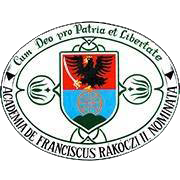Please use this identifier to cite or link to this item:
https://dspace.kmf.uz.ua/jspui/handle/123456789/3341| Title: | Роль і місце Дюли Барі в житті Закарпатської Реформатської Церкви в період радянізації |
| Other Titles: | The place and role of Gyula Bary in the life of the Reformed Church in Transcarpathia during the period of sovietization |
| Authors: | Szamborovszkyné Nagy Ibolya Самборовскі-Нодь Ібоя Ibolya Szamborovszky-Nagy |
| Keywords: | Дюла Барі;Закарпатська Реформатська Церква;історія Церкви;радянська влада;реформати (кальвіністи);Gyula Bary;Сhurch history;Trans-Carpathian Reformed Church;History;Soviet power;the Reformed (Calvinists) |
| Issue Date: | 2023 |
| Publisher: | Інститут українознавства ім. І. Крип’якевича НАН України |
| Type: | dc.type.researchStudy |
| Citation: | In Україна: культурна спадщина, національна свідомість, державність. 2023. Випуск 38. c. 259-278. |
| Series/Report no.: | ;Випуск 38. |
| Abstract: | Резюме. Зазначено, що життя і діяльність колишнього пробста Березької церковної єпархії, сеньйора (старшого, або обласного уповноваженого Реформатської Церкви) Закарпатської Реформатської Церкви Дюли Барі до сьогодні не були предметом окремого історичного дослідження. Відтворено у хронологічному порядку діяльність цього представника Реформатської Церкви від часу приходу в регіон радянських військ і до його смерті. Розкрито той амбівалентний та водночас заплутаний стан, у якому опинилися конфесії краю, зокрема й реформати, після приєднання Закарпаття до Радянського Союзу.
З’ясовано, що дії Д. Барі були спрямовані передовсім на те, щоб реформатські громади пройшли державну реєстрацію та могли й надалі проводити богослужіння свого обряду. Стверджено, що віднайдені та проаналізовані джерела свідчать про прагматичний підхід у діях церковного керівника навіть тоді, коли його сучасники, спостерігаючи збоку, не розуміли мотивації його вчинків.
Констатовано, що хоча представник вищого закарпатського реформатського духовенства Д. Барі очолював ЗРЦ тільки до кінця 1949 р., однак це був саме той період, коли вирішувалося, чи зможе ця невелика, на думку радянської влади, конфесія чисельністю 90 тис. вірян зберегти свої традиції, чи, можливо, їм доведеться «влитися» до вже визнаної в Радянському Союзі організації Євангельських християн-баптистів. Відповідно стверджено, що своїм збереженням після 1944 р. ЗРЦ багато в чому завдячує саме священникові з Великих Берегів, пробсту Березького церковного округу Д. Барі, який у перехідний повоєнний період став уособленням стабільності, а у своїх рішеннях та діяльності, що ґрунтувалися на прагматизмі, він керувався насамперед інтересами реформатської громади. Abstract. It has been noted that the life and activities the former dean of the Bereg Diocese, senior (elder, or regional representative of the Reformed Church) of the Trans-Carpathian Reformed Church Gyula Bary has not been the subject of any separate historical study research. The study reconstructs the chronology of the representative’s activities of the Reformed Church after the Soviet troops entered the region until his death. In it, the ambivalent and complex situation is described in which the denominations et the region – including the Reformed one – found themselves in the Soviet Union the annexation of Transcarpathia after. It was found that Gy. Bary’s actions primarily aimed to receive official registration and to ensure possibilities for the Reformed communities to continue praising to the Lord according to their own liturgy. It was claimed that the identified and interpreted sources showed the pragmatism of the senior’s actions, even sometimes according to his contemporaries – viewing from the outside – considered the motives of his actions incomprehensible. It was stated that although Gy. Bary, as the senior member of the Trans-Carpathian Reformed Church, was the head of the TRC only until the end of 1949. This was the period when it was decided whether the domination – which, within 90,000 members, was considered to be very small in the eyes of the Soviet power, – could keep its traditions or whether it would be merged into the Evangelical Christian-Baptist congregation, which had been already recognized in the Soviet Union. Conseqently, the survival of the TRC after 1944 was mainly due to Gy. Bary, the pastor of Velikiy Berehy, and dean of the Bereg Diocese, who represented stability in the post-war transitional period and who, in his pragmatic decisions and activities, kept the interests of the Reformed denomination in mind. |
| Description: | https://www.inst-ukr.lviv.ua/uk/publications/materials/ukraina/61-038-ukrayina-kulturna-spadshchyna-natsionalna-svidomist-derzhavnist/ |
| URI: | https://dspace.kmf.uz.ua/jspui/handle/123456789/3341 |
| ISSN: | 2223-1196 |
| metadata.dc.rights.uri: | http://creativecommons.org/licenses/by-nc-nd/3.0/us/ |
| Appears in Collections: | Szamborovszkyné Nagy Ibolya |
Files in This Item:
| File | Description | Size | Format | |
|---|---|---|---|---|
| SZNI_Rol_i_mistse_Diuly_Bari_v_zhytti_Zakarpatskoi_Reformatskoi_Tserkvy_2023.pdf | In Україна: культурна спадщина, національна свідомість, державність. 2023. Випуск 38. c. 259-278. | 439.43 kB | Adobe PDF | View/Open |
This item is licensed under a Creative Commons License





